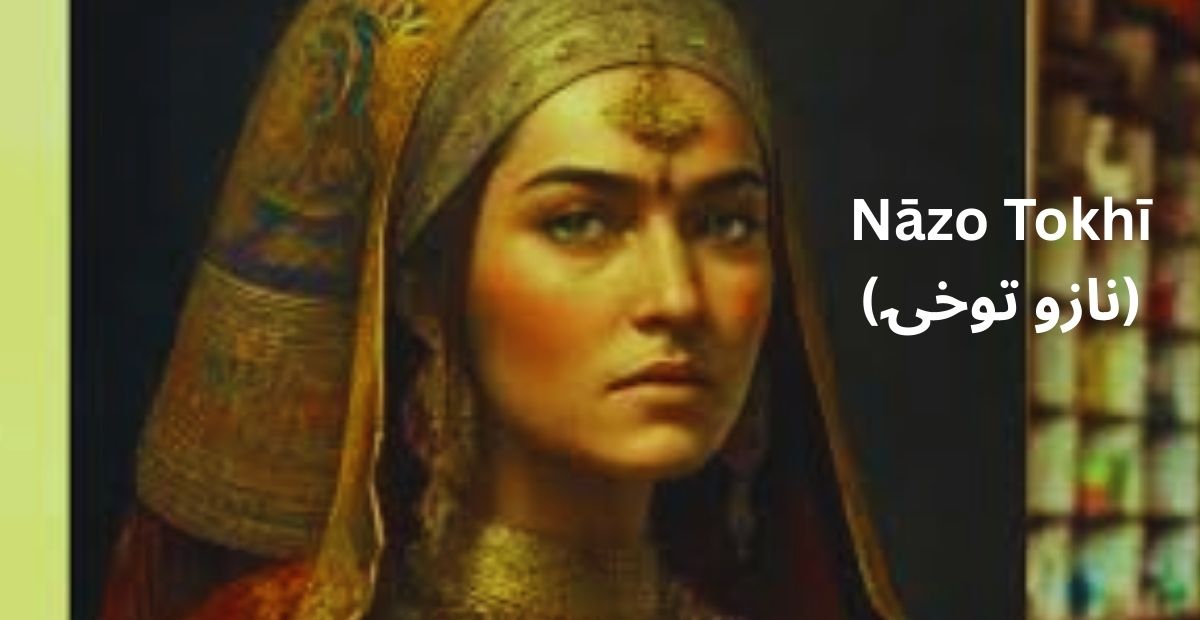Nāzo Tokhī (Pashto: نازو توخۍ), widely honored as Nāzo Anā (“Nazo the grandmother”), was a distinguished 17th-century Afghan poet, intellectual, and national heroine. Born in 1651 in Kandahar during the Safavid rule of Iran, she played a pivotal role in shaping early Afghan unity and resistance against foreign domination. Revered both for her literary contributions in the Pashto language and her courageous leadership, Nazo Tokhī is celebrated as the “Mother of the Afghan Nation.”
Early Life and Background
Nāzo Tokhī was born into a prominent Pashtun family in the village of Spozhmayiz Gul near Thazi in Kandahar Province, a region then under Safavid control. Her father, Sultan Malakhai Tokhi, was the head of the Tokhi tribe and served as governor of the Ghazni region, making the family both influential and well-educated. Recognizing Nazo’s intellectual potential, her father ensured she received a comprehensive education, unusual for women of her time.
She was married to Salim Khan Hotak, the son of Karam Khan of the Hotak clan. Their union marked the merging of two powerful Pashtun tribes. Her son, Mirwais Hotak, would go on to become a celebrated Afghan leader and founder of the Hotak Dynasty in the early 18th century. Her grandsons, Mahmud Hotak and Hussain Hotak, would also rule after her son’s death.
Intellectual and Political Influence
Nazo Tokhī became well known for her intellect, moral leadership, and poetry. Beyond being a writer, she was a political figure who actively worked to unite the fragmented Pashtun tribes. She was a staunch advocate of Pashtunwali, the traditional ethical code of the Pashtuns, and called for it to be adopted as the guiding law among the Pashtun confederacies.
Through her mediation, she succeeded in reducing conflicts between powerful tribes such as the Ghilji and Sadozai, encouraging unity against the oppressive Safavid rulers. Her home became a center of cultural and political discourse, and she was consulted in tribal matters—a rare honor for a woman of her era.
Warrior and Defender
Nazo Ana’s bravery extended beyond the poetic and political. Following the death of her father in a tribal conflict near Sur mountain, her brother left for war to avenge him. In his absence, she assumed command of the household and the fortress. When enemy forces approached, she took up arms, donned a sword, and defended her people alongside the men—earning her lasting fame as a female warrior.
Poetry and Literary Contribution
Nazo Tokhī’s poetic legacy remains a treasured part of Pashto literature. She is believed to have composed thousands of couplets (landay and ghazals), many of which express deep themes of love, impermanence, wisdom, and honor.
One translated couplet from her poetry reads:
Dew drops from an early dawn narcissus
as a tear drops from a melancholy eye;
O beauty, I asked, what makes you cry?
Life is too short for me, it answered,
My beauty blooms and withers in a moment,
as a smile which comes and forever fades away.
Her poetic voice served not just as artistic expression, but as a cultural force to inspire Afghan identity and resilience.
Miraculous Dream and Maternal Guidance
Legend surrounds the night of Mirwais Hotak’s birth in 1673. Nazo Ana reportedly dreamt of Shaykh Beṭ Nīkə, the legendary ancestor of the Bettani Pashtuns, who foretold her son’s future greatness. The Shaykh instructed her to nurture the child carefully, as he was destined to serve and uplift his nation. She would later recall this vision to inspire Mirwais in his youth, guiding him to leadership with honor and devotion to the people.
Death and Legacy
Nāzo Tokhī died around the year 1717, two years after her son Mirwais Hotak’s death. Her legacy was carried forward by other Afghan women of influence, notably Zarghuna Ana, the mother of Ahmad Shah Durrani, founder of the modern Afghan state.
Today, Nazo Ana remains an enduring symbol of Afghan patriotism, maternal wisdom, and feminine strength. Her name is honored in various institutions, including Nazo Ana High School for Girls and Nazo Ana Primary School, particularly in Kandahar and other regions with significant Pashtun populations. She is remembered not only as the mother of a king but as the spiritual matriarch of a nation.
See Also
- Malalai of Maiwand – Another iconic Afghan heroine
- Hotak Dynasty
- Pashto Literature and Poetry
- Pashtunwali
References
- Anjuman-i Tārīkh-i Afghānistān (1967). Afghanistan, Volumes 20-22.
- “Mirwais Neeka”. www.beepworld.de
- Harvard University (2003). Tribal Law of Pashtunwali and Women’s Legislative Authority.
- Hotak, Muḥammad; Ḥabībī, ʻAbd al-Ḥayy (1997). Pat̲a k̲h̲azana.
- Anjuman-i Tārīkh-i Afghānistān (2009). The Kingdom of Afghanistan: A Historical Sketch.
- Afghanan Dot Net (Archived).
- The Hidden Treasure: A Biography of Pashtoon Poets by Muḥammad Hotak.
- Mohmand, Mohammad Osman. Naz o Ana, Khyber.org.
- Afghanistan Women’s Council and School Reports.
